Meet the Couple That's Reviving a Tiny French Mill Town by Bringing Back an Ultra-Beachy Old-World Fabric Tradition
Henri Quinta sees stripes everywhere: colored pencils in a case, books on a shelf, flowers in a cultivated field. He sees them in striated sunset skies and wave-creased seas. Sometimes he sees stripes when he closes his eyes at night—especially, he says with a laugh, if he's had a little too much wine. The trim, youthful 66-year-old's eye for stripes has served him well as the owner and artistic director of Les Toiles du Soleil (which means "the cloth of the sun"), a small manufacturer of robust, exuberantly striped cotton fabric used in deck chairs, table linens, upholstery, espadrilles, and more. The goods are produced in Saint Laurent de Cerdans, a French Catalan village that until the 1960s had thrived as a manufacturing center of espadrilles and the striped fabric used to make the rope-soled shoes. Globalization took its toll on the century-old mills, however, and by 1993 only one remained. When Henri and his wife, Françoise (both interior designers from the nearby city of Perpignan), heard that the last mill was on the verge of shutting down, they went to see it.
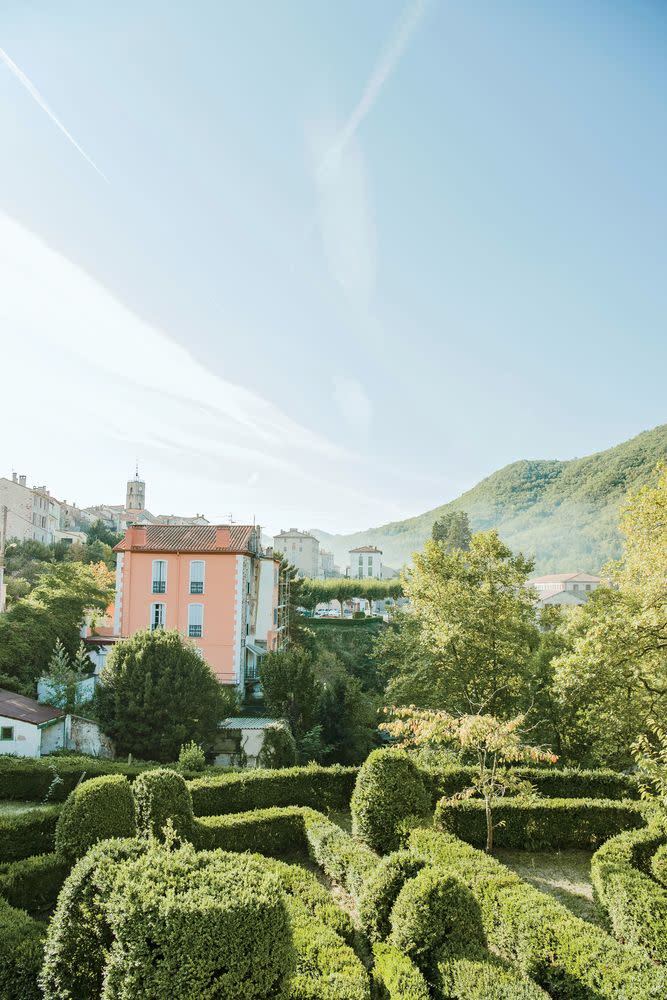
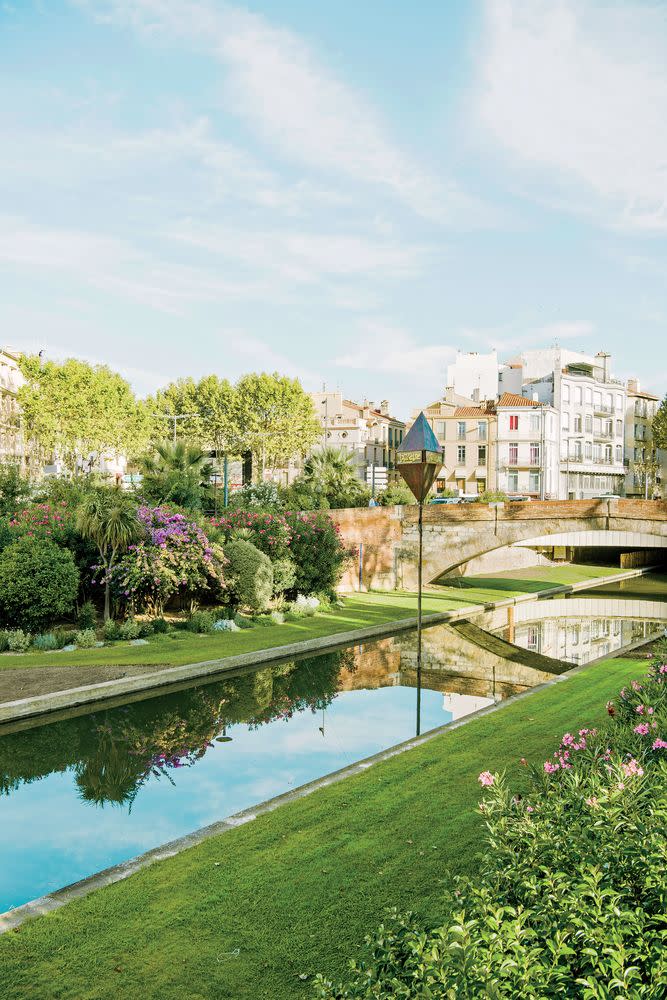
"It was in very bad condition," Henri says as he drives the narrow, forested road that winds through the Pyrenees foothills to the factory. "And we knew nothing about fabric or weaving."
But something about the old-world machines and the rich heritage of the village called out to them. After months of deliberation, they took the leap and bought the mill.
"We did it to rescue the factory and to prevent the Catalan weaving tradition from dying out," says Henri, who quickly picked up the fundamentals of textile production and became the line's sole designer. "We thought maybe we'd sell some fabric here in the Roussillon area, perhaps a little farther afield. We couldn't even imagine that it would sell in Paris."
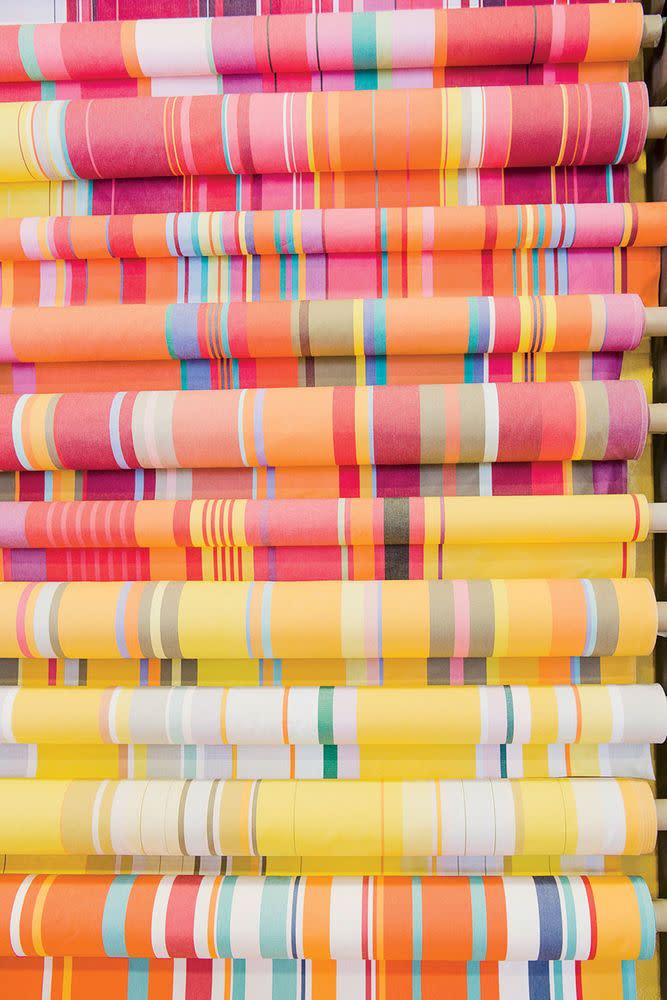
But their beachy, color-drenched stripes did indeed sell in Paris—and when Les Toiles du Soleil boutiques opened in Osaka, Tokyo, Santiago, New York City, and Moscow (plus online), they sold there, as well. Designers snapped up the fabric for projects all over the world: sling-seat deck chairs at the Lido rooftop cinema in Melbourne, sofas at Mama Shelter hotel in Los Angeles, upholstered benches at Hotel Le Toiny on St. Barts. Travelers also made pilgrimages to Maison Quinta, Françoise's home-decor emporium in Perpignan, where an entire floor is devoted to Les Toiles du Soleil. Meanwhile, Cole Haan, the American shoes and accessories maker, and Uniqlo, the Japanese casual-fashion retail giant, came knocking with requests to collaborate on limited-edition collections—which sold out.
Related: 5 Things to do in French Riviera:
In 2009, the French government honored the company with its Living Heritage award, bestowed on homegrown enterprises that keep tradition alive. Les Toiles du Soleil brought jobs—and pride—to Saint Laurent de Cerdans and spawned Création Catalane, formed by two young local women who took over an abandoned factory next door and resurrected the craft of espadrille-making using 100-year-old machines—and their neighbor's fabric.
"We were really surprised by the fast success of the company," Henri says, parking the car in a stone courtyard between his mill and the small factory store, with its candy-striped awning. "Because at the beginning, our only target was to save this little workshop."
I follow him through a heavy wooden door and onto the factory floor. Dozens of looms, blackened with age and fuzzed with lint, are banging and shuddering as gears turn, levers slap, and shuttles fly. But out of that gray industrial clamor, the sunniest of cloth is emerging, inch by lovely inch.
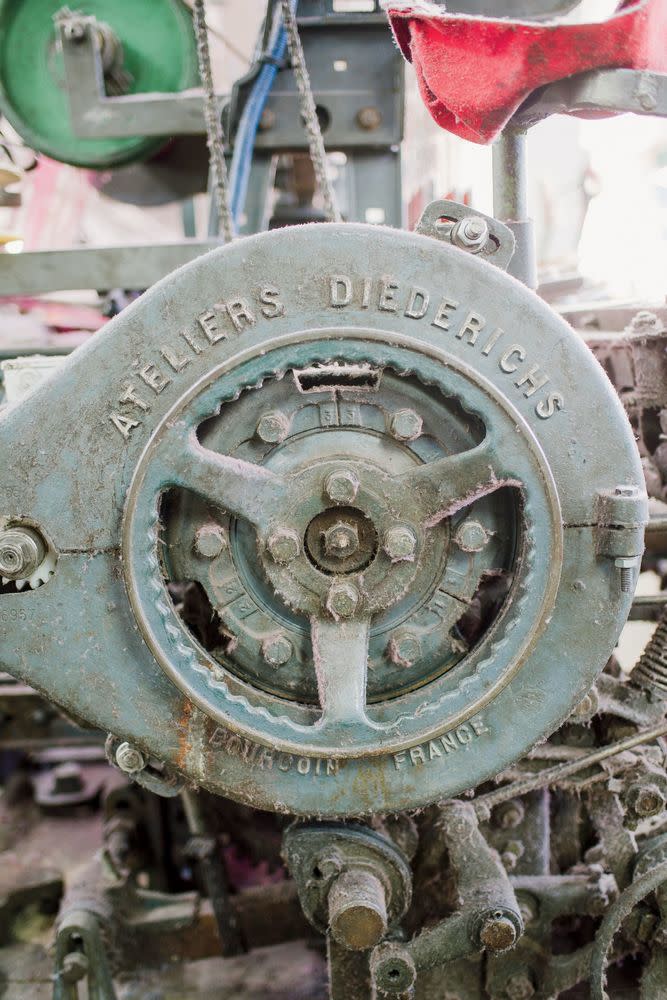
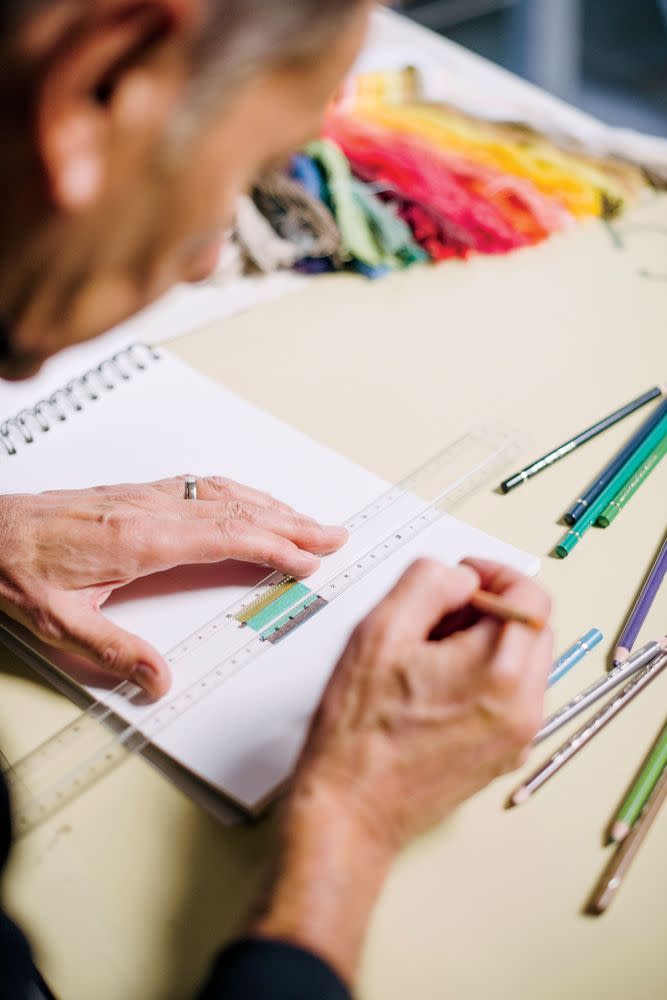
Henri runs his hand along a width of new fabric with obvious familiarity and pride. He has hand-drawn every design in the collection using colored pencils to mimic the more than 200 hues (some created by twisting together two different-colored threads) at his disposal in the weaving process. His quirky color combinations and unbalanced, nonrepeating thick and thin stripes appear random, but they are anything but. Each fabric is a carefully rendered, albeit abstract, map of Henri's travels and memories.
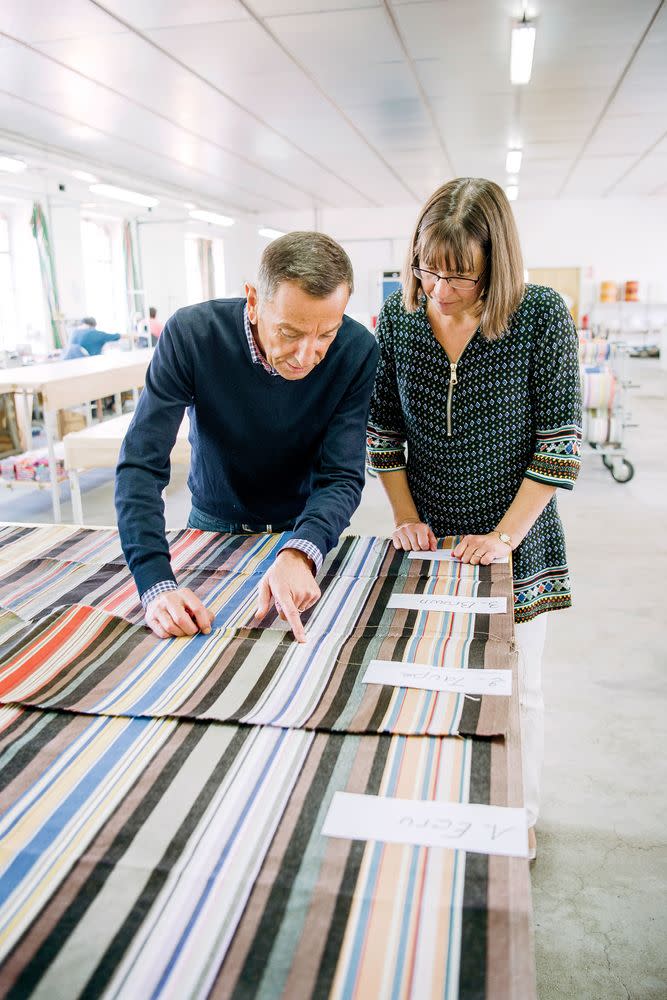
Angra—a buoyant combination of pink, poppy, turquoise, and white—was inspired, he says, by a beautiful bay that he saw while vacationing in Brazil. He drew Pole Nord, a range of snowy whites, glacial blues, and icy grays, from a ship in the Arctic; the thin red stripe in the field represents both the icebreaker's hull and the flag at 90 degrees north. Venise is a series of rods and bars rendered in terra-cotta, celadon, pine, and black: palazzos, canals, shutters, and gondolas. Henri sketched Canet en Roussillon while at the small beach house he and Françoise own near Perpignan.
"You see?" he asks. "Sand, water, sky, and sun. Happiness."
And that narrow strip of pink? "A small plane that flew by pulling a banner."
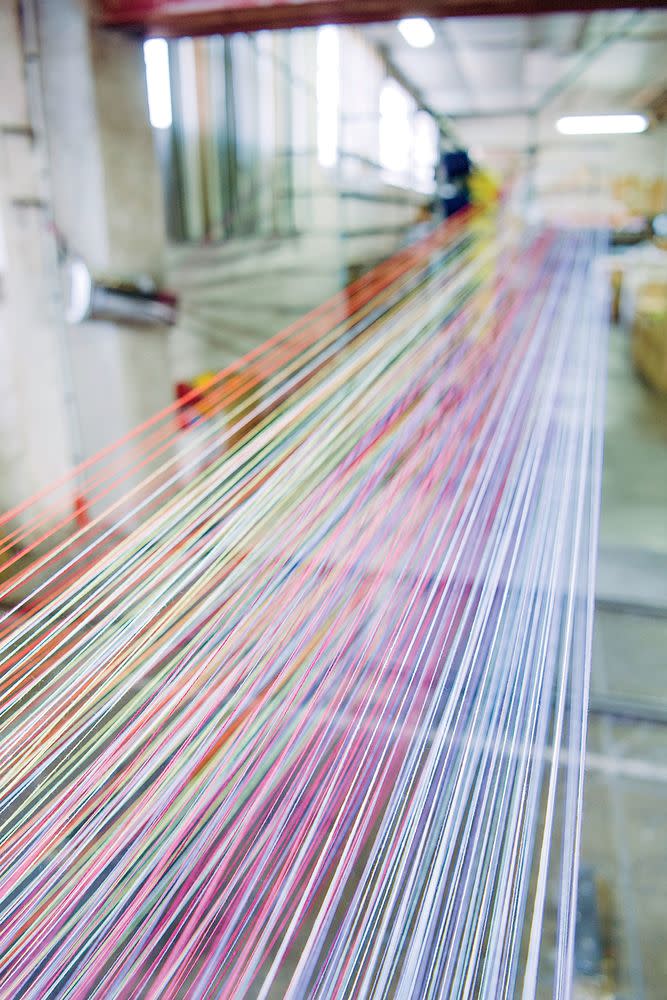
A graduate of the prestigious École nationale supérieure des Arts Décoratifs in Paris, Henri is an admirer of Sean Scully, Tom Phillips, and Mark Rothko, all painters of stripes. He approaches his own work with a fine artist's seriousness.
"I'm no Rothko," he says, "but each design I do is like a painting on canvas. I try to obtain the right interpretation of what I'm feeling at that moment. To find that harmony of colors."
Still, he knows that his work often looks like child's play.
"Once, I was in India, sitting in the shade by a swimming pool, working in my sketchbook. I had been so inspired by the colors all around—the saris, the markets. I realized people had crept up behind me to see what I was creating. I'm sure they were expecting a landscape—and here I was," he says, laughing, "this foolish man only drawing stripes."
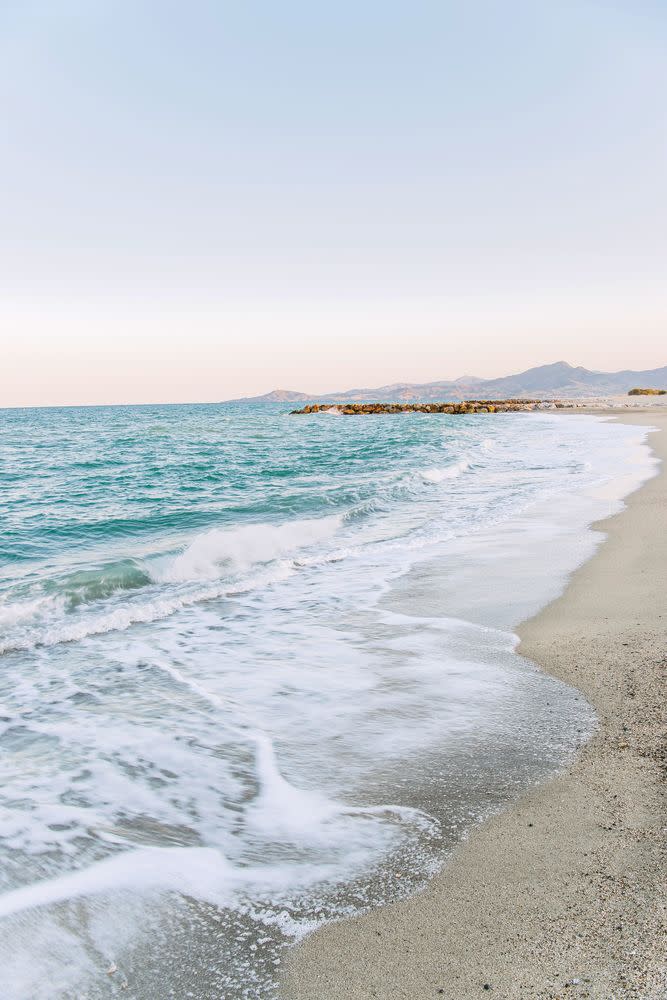
We walk through a large workroom where several women are sitting at sewing machines and others are standing at cutting tables, filling orders to be shipped around the world. Windows look out to a cluster of pale stone houses, leafless trees, a dark ridge, a slate gray sky. But in the center of the room, there is a carnival of color: dozens of bolts of finished cloth, masterpieces all. Henri surveys them with a smile.
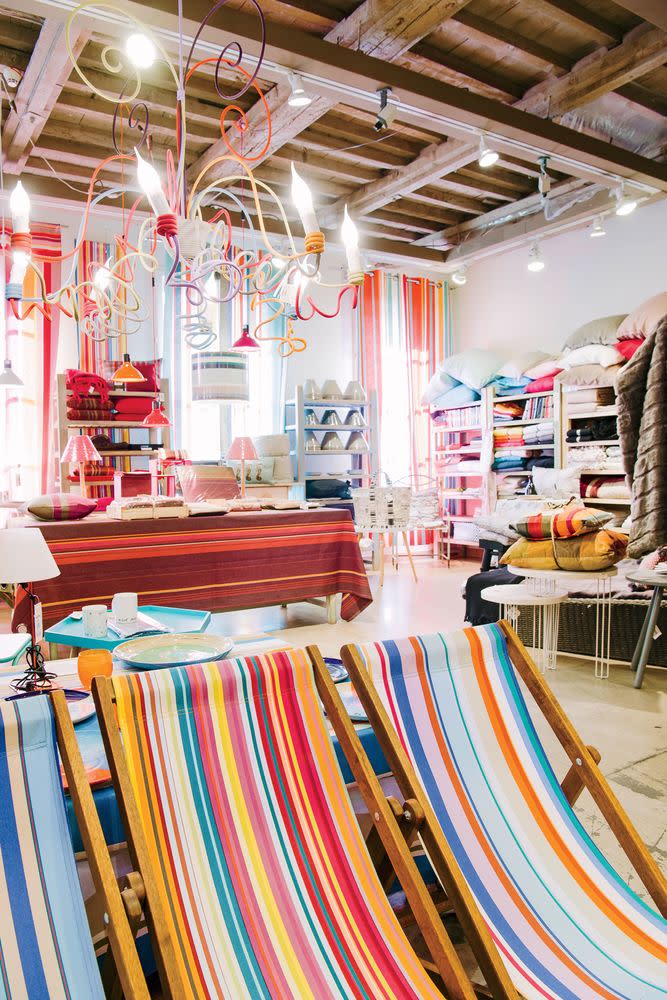
"I have always loved stripes. There is something very elegant yet very simple about them," he says. "And they present an infinity of possibilities."
Show Your Stripes
Les Toiles du Soleil sells its own line of home and fashion products featuring its iconic striped canvas. Our picks for spring (below), as well as fabric, are available at lestoilesdusoleilnyc.com.
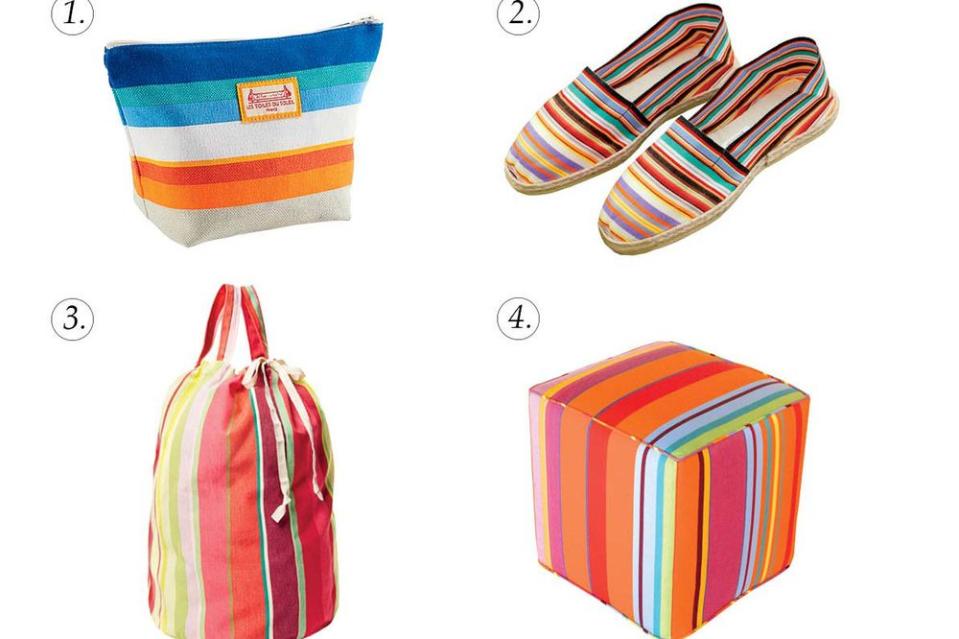
Photo: Courtesy of Manufacturer
1. Canet Small Cosmetic Case, $30
2. Tom Multicolor Espadrille, $65
3. Ceret Baluchon, $80
4. Bonbon Plume Sunbrella Pouf, $285


